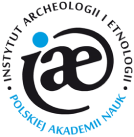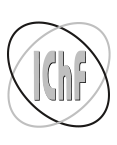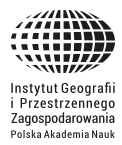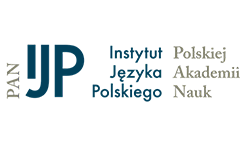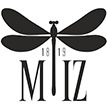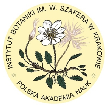
- The 1335 foundation (chartering) of Kazimierz, the town situated beside Cracow, was a difficult venture as a group of settlers had to be brought from another strong urban centre. Owing to the memory of the rebellion led by alderman (vogt) Albert and due to the political situation, Casimir III the Great most probably sought assistance from the town of Sandomierz in an attempt to find an optimum solution. This supposition is confirmed by the fact that the king favoured the town after 1335 and, even more importantly, that the foundation charter and one of the first documents for the new commune were issued at Sandomierz. A close relationship between Sandomierz and Kazimierz is observable for the subsequent years.
- The 1911 Chinese republican revolution (called Xinhai Revolution) was criticised as a bourgeois ‘unfi nished’ revolution, as no more than a dynastic revolution which toppled the Qing government, or even as ‘a sham’. Starting in the 1970s, several authors noticed that the republican revolutionary movement was weak and divided, and they appreciated the substantiality and importance of Qing’s reforms.
- The 1960s in the US were marked by social and political activity of a young generation. It was evident in, among other things, expressive stressing of their own distinctiveness. The controversy over a small plot of land in Berkeley in May 1969 became their symbol. In thehot political atmosphere of California at the end of the 1960s the dispute about the People’s Park led to a failed attempt to resolve it by force with the use of law enforcement services, and the death of one of the protesters gave the conflict much broader character than a local controversy over an unused plot of land.
- A breakthrough in perceiving the policy pursued by Chamberlain’s cabinet towards Germany took place in the Polish Ministry of Foreign Affairs in March and April of 1939 – after a closer cooperation with Great Britain began – but its origins should be looked for in the earlier period. The purpose of the article (based mainly on the archival search in the Warsaw’s Archives of Modern Records) is to outline the way of perceiving the British policy towards Germany – from the end of the Sudeten Crisis to the breaking of the Munich Pact – by the Polish diplomatic service of that time.
- A breakthrough in the political activity of Władysław Konopczyński took place in 1922 and involved winning the seat of a parliamentary deputy from the Popular–National Union ticket. Subsequently, Konopczyński remained in the Sejm of the Republic of Poland during a whole term of office (1922–1927), frequently speaking about education and schools of higher learning, and presenting motions concerning copyright, a statue on the freedom of assembly, and, predominantly, the introduction of the numerus clausus at universities and polytechnics. In 1925–1939 Konopczyński became actively involved in a struggle against the Piłsudskiites and reacted to the May 1926 coup d’état in a series of press articles criticising both the Marshal and his supporters. This uncompromising stance earned him many enemies within the ruling circles. The political career pursued by Konopczyński was not long–lasting; in 1930 he failed in the election to the Senate, and five years later resigned from all political endeavours due to his disapproval of the dictatorial tendency within the National Party. On the eve of the Second World War Konopczyński was an adherent of the Front Morges political alliance.
- A breakthrough moment in the history of Polish post-war architecture was the Council of Party’s Architects held in June of 1949, which was the first step to the introduction of socialist realism. The doctrine “proved out” to be an effective means of control over culture in the totalitarian state, but not an artistic one. It was an utopian idea and, although politically strong, it was philosophically and aesthetically weak. Architecture as the discipline of arts that enjoyed special interest of the authorities was under much pressure and mechanisms of control. It was argued that “the domains of architecture and urban planning needed to be deliberately managed by the party”. Thus, the command over creativity was exercised, architects were devoid of their pre-war status of artists, and their contacts with the West were limited. Yet, with the lapse of time, the influence of the party’s architects in the community grew weaker and weaker. A number of favourable opportunities to inspire ferment in the artistic communities presented when internal political and economic crises began, which in consequence led to the weakening of the Polish United Workers’ Party (Polish acronym: PZPR), and the struggle for power in the USSR after Stalin’s death. In fear of the loss of control, once more the party tightened its ideological grip on the artistic communities. The political leadership decided to force the pace of implementation of the doctrine, and increased their pressure on both the Association of Polish Architects and individual artists. Finally, a section of architecture was established at the Department of Culture and Education of the Central Committee of the PZPR. However, it was too late for such measures, as was ruthlessly exposed by the National Council of Architects in 1956, a part of the “Polish October” and a turning point in the post-war history of Polish architecture.
- A detailed analysis of the correspondence of Gen. Mikhail N. Krechetnikov, who was the commander of the Russian army in the war of 1792 with the task to take over the territory of the Grand Duchy of Lithuania and support the Targowica confederates in establishing local confederations, gives new, important information about these events. First of all, it shows a signifi cant discrepancy between the information contained in the published reports of Gen. Krechetnikov to Empress Catherine II and Platon A. Zubov as well as in the unpublished and little-known part of his correspondence to Nikolai I. Saltykov.
- A genealogy of the Sanguszko Family produced by Symeon Samuel Sanguszko (died 1638) has been preserved in three versions: the original and its two 18th-century copies. The work contains the fi liation of known and established manuscript texts, time of their creation, their purpose, and their archival and library history. Next, the sources of information are established: historical writings and the collective memory of the family, and based on this the historian’s craft of the author and the memory culture of his family are discussed. And fi nally, the importance of the genealogy for the Sanguszko Family’s identity and old-Polish genealogical studies is presented. The annex contains an edition of the genealogy text, reconstructed on the basis of old-Polish manuscripts and a nineteenth-century transcription of the original manuscript.
- A group of “priests patriots”, initiated in 1949 by the authorities of communist Poland, was supposed to support the process of stabilisation of the country, both through propaganda and action. The priests-patriots did not employ their own ideology, but implemented within the community of clergy basic slogans and practices of Stalinist social engineering. They mobilised the faithful to execute the Six-Year Plan, propagated the fight for peace, collectivisation of agriculture, and praised the radical socio-economic changes that were occurring at that time. They used the rhetoric of enlightenment and progress, verbally accepted class struggle condemned by the Catholic social teachings. They did not directly comment on the subject of dogmas of the Catholic faith, but in fact, they subverted the precepts of the Church (first, they refused obedience to bishops, whom they considered to be the representatives of reaction). The formation was strictly supervised by the security apparatus and was generously financed (especially in 1950–1953, when the state was fighting an intense political war with the Church hierarchy and Primate Stefan Wyszyński).The article focuses its attention on the “priests patriots” from Greater Poland and Kuyavia provinces, since in comparison to the rest of the Polish clergy, they were most active and numerous (circa ten percent of all the religious in the region). The author substantiates that they were isolated from the Polish society and regarded critically by the rest of the clergy, almost ostracised as traitors. In 1955, the material and ideological support of the state for the group ceased, which led to its dissolution.
- A major part of this article is based on recently rendered available sources from the SBU State Archives in Kyiv and reconstructs the last months in the life of Father Jerzy Moskwa (1910– 1941) — a Jesuit missionary and courier of Pius XIII and Metropolitan Andrzej Szeptycki (Andrey Sheptytsky). Arrested in January 1941 during his trip from the Vatican to Lviv, Father Moskwa was interrogated by the NKGB and invigilated by two co–inmates, whose detailed reports make it possible to expand knowledge about the methods and techniques applied by the Soviet services, the political and missionary plans of the Vatican involving the Soviet Union, and the infiltration of the Church in Eastern Galicia. Moreover, they comprise a study of a confrontation of the stand of a zealous Christian, represented by Father Moskwa, and Soviet mentality represented by Yevhen Hromovenko, former chief of the Intelligence of Soviet Ukraine, whom the Jesuit was converting in the cell to Christianity.
- A military cooperation of Germany with the Soviet Union prior to 1933 still at-tracts lively interest of Polish historians, who – unfortunately – base their research almost solely on Polish and English sources and literature. This results in repetition and preservation of erroneous and false information. The purpose of the present study is to rectify various per¬sisting errors of the Polish literature, on the basis of materials collected in German archives, complemented by the information from German- and Russian-language publications and three publications of documents from Russian archives.
- A new system of Polish-Lithuanian relations was shaped manly by the passivity of Poles inhabiting the eastern Lithuania in the plebiscite organised by the Lithuanian government on 9 February 1991, and a decision of the authorities of Vilnius and Šalčininkai (Polish: Sołeczniki) regions to hold a referendum, initiated by Mikhail Gorbachev, on the future of the Soviet Union to turn it into a new, loose confederation of states, which was not recognized by the Lithuanian authorities. Such an attitude of Lithuanian Poles was determined by several factors. Firstly, the Soviet social and economic structure; secondly, for a large part of people the old governments of the Vilnius and Šalčininkai districts and the memory of the Lithuanian Soviet Socialist Republic guaranteed stability and predictability. The soviet structures were more trusted than a newly introduced, not strong yet Lithuanian social and political order. The sense of threat was intensified by an unquestionable domination of Lithuanians on all levels of the new hierarchy. Social and political reforms were perceived by the Polish minority in Lithuania through the prism of a rule of the majority. For the rest of the Lithuanian society (except of the Russian minority) such an attitude was completely incomprehensible. In such complex geopolitical circumstances Poles from the regions of Vilnius and Šalčininkai decided to convene a congress of deputies of the Vilnius and Šalčininkai regions to Mostiškės. According to a project adopted at the Congress, the Vilnius district was to become “an autonomous administrative-territorial unit within the Lithuanian Republic”, with a broad political autonomy. In the opinion of Lithuanians, however, the region of Vilnius should not be “an autonomous administrative-territorial unit of the Lithuanian State”, but form a part of Lithuanian federation. This meant that the Poles wanted to enlarge the status of the Vilnius region and to strengthen its autonomy within Lithuania. The implementation of such a project would mean a decentralisation of the state. In a complex geopolitical situation of that time all attempts at the decentralisation of the country was regarded by the Lithuanian political elite as the threat of the security of the young Lithuanian state, its sovereignty and territorial integrity.
- A presentation of an edition of an inspection of customs houses and tollgates in the voivodeship of Kalisz (1571). The published inspection was the outcome of a constitution passed by the Sejm of Lublin in 1569, which resolved, i.a. to supplement the results of an inspection conducted in the mid-1560s. Akt rewizorów ziemskich województwa kaliskiego has been a source familiar to historians from the time of Karol Buczek, who wrote about it in an introduction to an edition of a road inspection issued by Bożena Wyrozumska. A present the source is kept in the Central Archives of Historical Records in Warsaw together with other lustration material. This clean copy contains numerous information about the state of roads, environmental conditions, and neighbourly relations between members of the gentry in the discussed territory. The published inspectors’ document includes numerous copies of earlier privileges consenting to the collection of customs duties or tolls in the mentioned localities.
- A presentation of the way in which the staff of the Polish Embassy in Rome observed preparations for the Second Vatican Council in 1958–1962. The text belongs to a current of research analysing the attitude of the communists towards the Catholic Church and relations between communist states and the Vatican. The author provides information about diplomats who obtained data concerning the Apostolic See and the titular preparations as well as their chief informers. He also indicated the cooperation between Polish diplomats and those of other communist countries regarding information exchange, joint policies vis a vis the See, and the participation in the Council of bishops from various member–countries of the Soviet sphere of influence. The article is based predominantly on material produced by the diplomatic service: dispatches, notes, reports, and analyses by the staff of the Embassy of the People’s Republic of Poland in Rome.
- A preserved fragment of the Annals from the Benedictine abbey in Lubin (southern Greater Poland), and written probably at the turn of the twelfth century, contains five added notes in handwriting from the middle of the thirteenth century. All the notes pertain to the bishops of Poznań arranged into a complete sequence from 1146–1172. Comparisons of information found in the Annals with other sources show that the notes about the bishops and the dates included therein are basically credible (with one exception when the author of the added information mistook the succession of the bishops). In all likelihood, they originate from a non-extant catalogue of the bishops apparently kept at Poznań cathedral, similarly as in the case of a majority of other Polish dioceses. This was a so-called simple catalogue, recording only the names of the consecutive ordinaries as well as the dates of their ordinations and death. The Lubin Annals notes enable us to recreate a fragment from the midtwelfth century but the catalogue as such was probably written from the time of the restoration of the Poznań diocese (ca. 1075) and existed in the thirteenth century (when data were copied from it in Lubin); its loss can be associated with a destruction of Poznań cathedral, confirmed in 1313–1314.
- A reflection on the functioning of care for children and adolescents in Poland after World War II is far from full in Polish historiography.Although the postulate to centralise social care, coordinate it and increase the state’s participation in it, was put forward as early as 1944, in 1945–1947 political circumstances made it impossible for social care to be subject of endeavours of the communists.In these post-war years, the actual care for children and young people was totally dominated by social organisations. Children and adolescents were placed mainly in 380 children’s homes run by nuns, which made 43% of the total number of children’s homes residents in Poland. The “successes” of the Polish authorities in their first year of rule were limited to the takeover of a few charity organisations that were allowed to exist under the German occupation of Poland: the Central Welfare Council (Polish: Rada Główna Opiekuńcza) and Polish Red Cross (Polski Czerwony Krzyż).The later “competition” of the Polish Socialist Party (Polish acronym: PPS) and Polish People’s Party (PSL), together with what we usually call “civic society” influenced the “minimalism” of political ideas of the Polish Workers’ Party (Polska Partia Robotnicza) about this sphere of social reality, reflected mainly in pushing for the principle to build nurseries and kindergartens and in distribution of founds through the two PPR’s “own” ministries: the Ministry of Industry and Ministry of Supply. The Ministry of Industry, led by a PPR’s strong man, Hilary Minc, together with the Ministry of Supply and Trade, headed by an another PPR member, Jerzy Sztachelski, were the most important tools in the communist realisation of social care modelled on the Soviet examples.When finally the state control became possible (1949–1950), a majority of social organisations (including the charity ones) was suppressed or integrated. Such was the fate of children and adolescents organisations: the Polish YMCA , Central Committee of Social Care (Centralny Komitet Opieki Społecznej), Society of Orphans’ Nests and Kościuszko’s Villages (Towarzystwo Gniazd Sierocych i Wiosek Kościuszkowskich), “Caritas” and tens of smaller ones.
- A review of Peter Collmer’s book on the functioning of the Saxon administration of the royal estates in the Polish-Lithuanian Commonwealth between 1700 and 1763. It discusses some of the author’s theses and provides a critique of the modernisation model as applied to the early modern European state, drawing on the example of the noble Commonwealth in theeighteenth century. <br>
- A rise of interest in issues of heredity and advances in medicine in the nineteenth century resulted in the widespread medicalization of social phenomena. Theories formulated in the field of natural sciences increasingly served as a tool to explain unacceptable patterns of social behaviour, including prostitution which began to be seen as a biologically determined condition. As a main channel for the spread of STDs – some of them potentially transmissible across generations (congenital syphilis) – prostitution became one of the major concerns of medical professionals. Thus, what was previously a sin and an insult to middle-class moral standards, now came to be seen as a health menace to the entire population. In times of increased competition between nation-states, the latter argument played an even more important role, and the ruling elites sought to tighten control over what they perceived as ‘dangerous bodies’. As campaigners against the ‘great social evil’ also analysed prostitutes’ social milieu, discourses on the causes of prostitution were highly confusing. One source of confusion was Morel’s theory of degeneration, in which the author skilfully combined environmental influence with the concept of hereditary pathology. Additionally, some authors still adhered to a much older explanation for social ills. The construction of an evil ‘Other’ – typically unscrupulous Jew – responsible for planting various physical and/or moral ‘plagues’ in a victimized population, thus threatening its biological existence. The fear of deterioration, inevitably leading to extinction, unified proponents of old-style and modernist anti-vice campaigners. This article offers an overview of expert narratives on the causes of prostitution in the early decades of twentieth century Poland.
- A situation of Czechoslovakia in 1938 was very bad. Standing alone, Czechoslovakiatried at all cost to retain its sovereignty. The Germans and Italians, however, more and more certain that no other country would stand up for Prague, were showing themselves increasingly hostile towards Czechoslovakia. The diaries of Joseph Goebbels and Galeazzo Ciano make it possible for us to follow opinions about the future of the Czechoslovak state.
- A statue on the Office for State Protection (Urząd Ochrony Państwa — UOP) was passed on 6 April 1990 upon a tide of transformations commenced by the Round Table debates held a year earlier. The implementation of this legal act is regarded as the date of the inauguration of shaping the special services of an independent Republic of Poland. The article attempts to describe the transformation of the communist state security organs — the Security Service of the Ministry of Internal Affairs — into a state protection service (such as the UOP). The characteristic feature of this process was its considerable dynamics, since in the course of only several months it achieved a formal conversion of the political police, which mainly combated the democratic opposition, into a social service whose domain of activity was totally different from that of its predecessor. The article called for an analysis of a process aiming at the establishment of new special services via a number of key formal–legal documents — the outcome of a sequence of political and organisational events. The sources on which the article is based are composed, first and foremost, of documents in the archives of the Institute of National Remembrance, and in particular material describing the transformation of the SB into the UOP and the verification of the functionaries, conducted in the spring of 1990. Supplementary material originates from the archive of the Chancellery of the Chairman of the Council of Ministers and legal acts pertaining to the described problem, i.a. laws, ordinances, and orders.
- A weekly ‘Motor’, appearing from 1952 with a circulation of over 100 thousand copies was the most important magazine devoted to the subject of motorisation in Poland. Initially, it was published under the subtitle of ‘Weekly of the Road Transportation Workers’, and from 1953 on: ‘Illustrated Weekly’. The first issues were full of typical articles on drivers’ competitions, development of the industry and road transportation, and Cold War propaganda. In practice, individual motorisation was non-existent. A change was brought about by the turn of 1955 and 1956. The announcement of the mass production of totally Polish “Syrena” led to gradual evolution of the weekly’s character. It made its pages available to a larger number of the two and four wheels individual owners. Thus, an analysis included the issues for the period between 1955 and 1966. Those twelve years show the changes in individual motorisation in post-war Poland – from the announcement about the production of “Syrena” to the information about the contract with the Italian Motorisation Giant FIAT. The ‘Motor’ pages became the forum to discuss the latest car and motorcycle makes and models, shortages in the infrastructure and insufficient equipment, to exchange information about car repairing and servicing. There were also other issues brought up, such as the problem of car rationing, both of Polish and foreign makes, or an increased number of traffic accidents. All these elements show the problems that the vehicles owners in Poland of 1955–1966 had to face.
- A Workers’ Defence Committee (Polish: Komitet Obrony Robotników) founded in 1976 was the first open oppositional organisation in communist Poland. Apart from legal and financial assistance to the workers persecuted by the state authorities, the KOR organised a publication of periodicals outside the reach of the state censorship, such as the ‘Information Bulletin’ (‘Biuletyn Informacyjny’). Initially, the periodicals copies were typewritten, but at the turn of 1976 and 1977 they began to be multicopied on duplicating machines, which allowed to greatly increase their circulation. The KOR Communiqués described the scale of reprisals: a number of detained, fired and convicted workers, they reported beatings, trials and sentences. They presented detailed scopes and types of the assistance offered and informed of the police actions towards the opponents: arrests, interrogations, beatings and other persecutions. According to the main principle, only proven information was published. The information about the KOR activities was passed on to Western journals and broadcasting stations from where it was transmitted back to Poland, through the broadcasts of the BBC Radio and the Radio Free Europe.To the mid-March of 1977 the Committee had financially assisted 557 families. Cases of legal and medical help are impossible to be counted. The KOR’s representatives were sent to workers’ trials, they reached the families of imprisoned workers. The information had been gathered about the fate of almost thousand persons throughout the whole country. The operation was conducted by volunteers only, and the funds were raised through individual donations handed from person to person. The authorities of communist Poland launched a campaign to plague the opposition members with anonymous letters containing insults and threats, telephone calls and intrusions of alleged workers, but all those failed to interrupt the KOR activity.
- Aaron Alexander Olizarovius, lawyer and author of „De politica hominum societate” (1651), restructured Aristotle’s practical philosophy and based his understanding of the political community on the notion of economic partnership (societas) known in Roman law. These aspects point to the creative nature of the treaty as an important document of the dialogue between the Polish-Lithuanian Commonwealth and Western Europe on just social order.
- The accession of King Stanislaw August to the Targowica Confederation was one of the factors that signifi cantly infl uenced the fate of the Commonwealth. The king justified this step with a hopeless situation and the result of voting by the Guard of Laws. He also hoped that by joining the confederation, he would be able to infl uence its further shape. In the light of the new documents found in Russian archives, previously unknown to researchers, one can conclude that the decision was made too quickly and, moreover, the king was determined to make it without looking at the stance of the members of the Guard. As it turned out, he achieved the opposite eff ect than he expected – not only did he facilitate Russia’s pacifi cation of the country, but also he deprived himself of any infl uence on further events.
- According to the regulations on the intelligence service in the Polish Army that came into life in 1919, it was to be based on ideological principles, and the service of individuals acting for financial purposes was to be used only exceptionally, i.e. in the case of particularly precious intelligence materials. In reality, undercover agents and paid informers were used to obtain information. As a result, there were also cases of embezzlement or money wangling from the intelligence funds. <br>
- Adamczyk A., Bogusław Miedziński (1891–1972). Biografia polityczna, Toruń 2000.
- After 22 June 1941, the German occupier launched an anti-communist propaganda campaign on the Polish lands. The tool for its implementation became, among others, brochures written in Polish, portraying the Soviet Union as a country threatening European civilisation and wishing to destroy Polishness. For this reason, much space was devoted to the Soviet-occupied eastern Polish areas, showing the brutality of everyday life under Soviet rule.
- After analysing archival documents from the US Department of State, the au-thor reconstructs the fate of the Jewish population in the Polish territories occupied by Nazi Germany. The sources quoted, confronted with the literature on the subject, made it possible to reconstruct the German policy towards Jews, including the course of the Holocaust in its most important and crucial moments. The analysis of the documents reveals the extent of the American government’s knowledge of the persecution of the Jewish population in Poland under German occupation. <br>
- After regaining their freedom after 123 years of subjection, Polish people were “inebriated with freedom”, as Józef Piłsudski said. It was in the shadow of this euphoria that important social and economic processes occurred, together with grave internal and external threats that conditioned the restoration of the Polish state under the Provisional Chief of State (11 November 1918 – 26 January 1919), and the Chief of State (26 January 1919 – December 1922).
- After the agreement concluded with the “Solidarity” in summer of 1980, it was obvious that the crisis would also have an impact on the relations between members of the Polish United Workers’ Party (PUWP). The Political Bureau of the Central Committee as well as the rest of the apparatus divided into two wings. Liberals wanted further cooperation with the Solidarity and democratisation of the Party’s structures. Conservatives (also called dogmatics) were eager to fight against the opposition and therefore maintain discipline in their own ranks in order to be more efficient in that struggle. Meanwhile, ordinary members massed in the Basic Party Organizations along with their leaders from the lower level of the apparatus started to articulate their disappointment and criticism of the PUWP policy and leadership. The phenomenon was most apparent at the universities and the most numerous industrial party cells. Basic organizations started to cooperate with each other, making the so-called “horizontal structures” (in opposition to vertical structures regulated in the Party’s statute). One of that structures was the Party Coordination Commission of the Warsaw Scientific Community. It was established in November 1980 and consisted of representatives of the universities and the Polish Academy of Sciences as well as representatives of workers invited to the Commission. The main issue discussed during the Commission meetings was general democratization, especially of the PUWP. The head of capital’s communist apparatus Stanisław Kociołek supported that movement but probably it was a tactical decision made to please own members in order to have a free hand to deal with the “Solidarity” regarded as the main threat to hegemony of the Party. This uncomfortable partnership lasted almost until the introduction of martial law in December 1981 which delegalized any informal (both dogmatic and horizontal) structures.
- After the end of the First World War in 1918, and with the start of the Paris Peace Conference, the United States, to establish permanent peace in Europe, became involved in settlement of European territorial questions, recognised in universalist, transnational terms.The problem of Upper Silesia, a disputed region between restored Poland and defeated Germany, was estimated by the US administration fromal iberal internationalist perspective, which assumed to develop a supranational political and economic community.
- After the Great Famine in Ukraine that killed at least 3.5 million people, the Bolsheviks faced a problem of a lack of resources and people to work on the land. Thus, a decision was made to bring to the most depopulated areas peasants from Russia and Belarus, as well as some farmers from other regions of Ukraine, less affected by the famine. The action did not succeed, as a majority of peasants who were brought to Ukrainian lands devastated by the Holodomor went back to their homes.
- After the Lithuanians seized the Klaipeda District in 1923, the legal status of the Catholic Church in this area gained a political character. The negotiations between the Holy See, Germany and Lithuania concerned the establishment of a delegacy subordinate to the Warmian bishop or a separate diocese with the German bishop at its head, or even the erection of an apostolic vicariate in this region. Ultimately, Pope Pius XI by his bull Lituanorum gente of 4 April 1926 created a separate Klaipeda’s prelature with the bishop of Telsche.
- After the parliamentary elections in June 1989 and the beginning of the political and systemic transformations, Poland made efforts to join the Euro-Atlantic partnership, culminating in the accession to NATO and the European Union. However, Poland had to overcome many barriers, including overcoming Russia’s opposition and gaining the support of the United States and Germany, which, despite politicians’ declarations and promises, in practice was not so enthusiastic and unambiguous. The article shows Russia’s negative stance and Germany’s attitude toward Poland’s efforts to join NATO in 1989–1999.
- After the re-Catholization of the Free Imperial City of Aachen (1611–16), Protestant congregations were forced to operate underground until the Reformed Church – openly supported by the Dutch States General – found a new place of refuge in the neighbouring Dutch village of Vaals. Ca. 1680, Vaals developed into a multiconfessional site of religious freedom where Roman Catholics, Germanand Frenchspeaking Reformed, Lutherans, and Mennonites lived peacefully side by side. With the exception of everyday controversies in the early decades, the preachers of different Protestant congregations worked together. Violence on religious grounds was not part of daily life in Vaals, although it did at times intrude from the outside. Examples of this were the violent attacks on Protestant churchgoers in the middle of the eighteenth century, which were carried out by lower-class Catholics from Aachen. The Catholic clergy, on the other hand, did not engage in hate sermons. Moreover, the presence of Jews did not cause problems in Vaals and the only documented action against Jewish property was not motivated by anti-Judaism. For the Protestants of this distinctly Catholic area, Vaals became an important place of refuge for the public exercise of their faith. The diverse congregations that worshipped in Vaals knew how to cope with each other’s presence in a peaceful manner during everyday life.
- After the Second World War Ryszard Zakrzewski (1913–1994) was a well-known exile political and social activist in Great Britain. In the late 1940s he became one of the leaders of the Polish Socialist Party in emigration. He was also active in the Polish Ex-Combatants’ Association and the Federation of Poles in Great Britain. In 1956, the intelligence of the Polish People’s Republic got interested in his person. Over the next few years Zakrzewski maintained contacts with intelligence officers, employed as diplomats at the Polish Embassy in London. Despite the fact that he was not formally recruited, he provided information about activities of certain political groups on emigration, especially socialists. And, as evidenced by documents, he was paid money by some of his contacts. And it was also him, who sought to made his talks of political nature. When his contacts were exposed by British counterintelligence, he ended his collaboration. In the following years Zakrzewski continued to participate actively in the political life of the Polish emigration, and in 1989 he became a minister of the last Polish government in exile.
- After the World War II ended, Polish destroyed roads were frequented by several thousand cars only. It was the result of both war operations and the state policy adverse to motorisation, conducted by the leadership of the state before 1939. Almost simultaneously with the establishment of the Polish Committee of National Liberation communist began to develop the administration to deal with automotive matters. To this end, there were established successively: the State Office of Cars, Commission of Motorisation at the Central Office of Planning and the Motorisation Subcommittee of the Economic Committee of the Council of Ministers. All these institutions, however, operated for a very short time, while the lack of their strictly regulated competencies resulted in the fact that they had almost no influence on motorisation policy led by the state leadership. Another significant question was an increase in the number of motorised vehicles. The most important source of cars were relief supplies distributed by the UNRRA. Apart from that, a decision was made to buy decommissioned military cars and to import new cars from Western Europe. There was also a plan to initiate the car production: lorries at Starachowice and passenger cars under foreign licenses. European markets were probed to select the best licence. Talks were conducted with Czechoslovak and French companies, but finally a decision was made to use the licence of Italian FIAT. Despite the fact that the contract was signed, Poland withdrew under Soviet pressure and was offered free of charge a licence for the production of Soviet cars GAZ M-20 Pobieda, which became a prototype of FSO-Warszawa.
- After World War II ended, Poland was one of the most backward European countries as regards the development of motorisation. It was the result both of the war destructions and the heritage ofthe Second Polish Republic. The first decade after the WWII was particularly adverse for private car owners – a small number of cars, almost nonexistent possibility to buy a car, restrictions in movement of people – all those practically brought the development of individual motorisation to a halt. Changes were brought about by the political events of 1956. The new authorities, despite their unfavourable opinions of individual motorisation, could not remain blind to the growing aspiration of Polish people, including their desire to have an own car. Another important voice belonged to a wide array of experts who regarded the development of automotive industry as a chance for modernisation, not only of Polish industry but also the Polish society itself. The discussion among experts revealed not only a ‘huge need for motorisation’ but also references to interesting transformations triggered in the societies of Western Europe by the possession of an own car. Despite significant changes in the state policy, the time of Władysław Gomułka was a wasted opportunity, and only the 1970s brought about a breakthrough in the development of mass motorisation in Poland.
- Against a comparative background of medieval myths of the origins of peoples in medieval Europe, the author performs an analysis of the dynastic myth of the Piasts. The analysis leads him to the conclusion that two mysterious strangers who in Piast’s hut performed a miraculous multiplication of beer and pork, and then a ritual cutting of hair of Piast’s son whom they named Siemowit (meaning the ruler or master of the family) and through this ceremony took him as their own son thus establishing a special link between themselves and the whole Piasts’ dynasty – were a Slavonic version of the divine twin brothers, the Dioscuri.
- The aggression of the Soviet Union on Poland on 17 September 1939 faced the Kingdom of Romania with the matter of granting aid to Poland, to which it was obliged by an alliance from 1921 onwards. The heads of the Romanian state feared sharing the fate of the Polish Republic, which fell victim not only to the USSR, but had also been defending itself for more than two weeks against an assault by the Third Reich. Wishing to save their country from a catastrophe, they were looking for a way to evade their alliance duties towards Poland. Meanwhile, in the face of an imminent disaster, Polish leaders made steps to transfer the political leadership of the country to France, in order to continue fighting for victory alongside the Western allies. To move there, they needed to obtain an agreement from Romania to transfer to one of their ports, in order to be able to continue the journey. A threat of a Soviet and German invasion meant that the authorities in Bucharest, using rather far-fetched reasons, decided to intern the Polish government.
- The aim of the article is to analyse the origins of cooperation between British institutions responsible for special operations: the General Staff Research – GS(R), later renamedMilitary Intelligence Research (MIR) with the Polish side in 1939 on the eve of the war andduring the Polish campaign. The basis of research are archival materials from Great Britainand Poland as well as memoirs and the scholarly literature on the subject.
- The aim of the article is to analyse the process of formation of the literary circle in Szczecin and to indicate its main initiators. A juxtaposition of the literature on the subject with documents issued by the government administration and the Professional Association of Polish Writers as well as letters and memories of writers makes it possible to trace the course of “cultural re-Polonization” in Szczecin. It also permits to indicate the reasons why the action was so short-lived and the motives of writers who decided to move to the city.
- The aim of the article is to demonstrate the role of national symbols in the identity processes taking place in a divided society, as is the case with Montenegro. In 2006, this country with a population of about 620 thousand people became an independent state. The Montenegrin symbol politics and the disputes surrounding it are analyzed within a wider sociopolitical and historical context. The case of Montenegro illustrates how contradictory the role of national symbols might be in a polarized society. Disagreements over symbols can therefore act as a sort of litmus test to indicate the existing political and identity divisions. Each symbolic element involved in the continuous process of negotiating identity becomes a matter of fundamental importance.
- The aim of the article is to present the activity and attitudes of the youth in pub-lic life in the Congress Poland during the First World War. The basis of the sources is the set of the printed ephemera, which were released in this time by young publishers, including the youth organisation. Regardless of the politic preferences, the youth organisations expressed the belief of the significant mission of the generation growing up during the war. The war context was often the reason of the military contents’ big presence, like the context of the statehood building justifi ed the national or sometimes even nationalist messages.
- The aim of the article is to present the forgotten work by Joachim Löisentin, titled Christliche Haußzucht..., published in Gdańsk in 1655, that is 31 years after its inception, by David Friedrich Rhete. This collection, a combination of a prayer book, a hymnal, and a religious handbook, was presented as a complementary guide for systematic and methodical catechisation, in the Lutheran spirit, in the comfort of one’s own home.
- The aim of the article is to present the genesis, progress and consequences of the so-called April–June Incidents of the 1989 in Beijing. The People’s Republic of China experienced serious internal crisis that year resulting in massive students demonstrations brutally suppressed by army. The crisis ended up with the political downfall of the China CommunistParty’s General Secretary Zhao Ziyang replaced by Jiang Zemin who continued the so-called “policy of openness” and reforms on Deng Xiaoping’s terms.
- The aim of the article is to supplement the knowledge of the German origin of Marcin Siennik by, among many other things, the information concerning his Protestant denomination, which influenced the way in which some fragments of the originally Italian The Secrects of the Reverend Maister Alexis of Piemont(Venice, 1555) were translated into Polish, and at the same time to present the views and doings of Sebastian Śleszkowski, the publisher of the second edition of the Polish translation of The Secrets(Kraków, 1620).
- The aim of the article is to supplement the knowledge of the German origin of Marcin Siennik by, among many other things, the information concerning his Protestant denomination, which influenced the way in which some fragments of the originally Italian The Secrets of the Reverend Master Alexis of Piemont(Venice, 1555) were translated into Polish, and at the same time to present the views and doings of Sebastian Śleszkowski, the publisher of the second edition of the Polish translation of The Secrets (Kraków, 1620).
- The aim of the paper is to examine, using the comparative perspective, how politicians and historians perceived the ideas applied in the process of formation of the states of Poland and Czechoslovakia. The situation in the period of 1918–20 seemed to be open to various opportunities for constituting and cooperation of independent countries, but not all these opportunities were acceptable at that time. Although some of them had a stabilising potential, the official narrative became the foundation for national historiography. The traditional master narrative (roles of Masaryk, Dmowski, Piłsudski), interrupted by the caesura of the 1945/54–89 period, understandably affects the current understanding of a state and celebration of its anniversaries, which raises a need to find a paradigm of interpretation that deviates from the nation state. The author disputes the approach of historiography which considered military violence a defining element of the process of formation of a state. He regards choosing a perspective which explains the transfer of the traits of the founders to the states as social institutions (quasi-figures) to be beneficial. Using archival documents, he shows how Masaryk’s ideas of forming a New Europe were received in Poland and what image of the situation in Poland was presented to Masaryk. Criticism of the neighbouring state in the speeches of the members of the Sejm was instrumentalised with regard to the tensions in the home politics. That is why the author puts the dispute about the Seven-day War and the Polish-Ukrainian conflict into a broader perspective. <br>
- The aim of the present article is to find an answer to the question what made the Polish society change throughout the last twenty five years their attitude to the Chechens – from strong acceptance to almost outright rejection. It is also an attempt to assess the circumstances in which the Chechen diaspora began to be regarded as “suspect community” in Poland, and what was its impact on the attitude towards refugees during the migration crisis in 2015.
- The aim of the study is to present the attitude of the Polish presidents in exile to the celebration of national holidays, such as the anniversary of the Constitution of 3 May 1791, or Regaining Independence on 11 November 1918. The author summarises the goals and ways of celebrating these occasions by Polish heads of state in 1939–1990, with taking into account media echoes of these celebrations. As a result, he has been able to capture the specificity of the celebrations in subsequent office terms. The author puts forward a thesis about their significant importance not only for maintaining Polishness abroad, but also for the political game both in the country and on the international arena.
- The aim of this article is to describe the transformation of the prison system during the years 1945–92 in Czechoslovakia. The following phases are analysed: the sovietisation process in the 1950s, the humanization and professionalization processes in the 1960s, the ambivalence between modernisation and repression in the 1970s and 1980s, and finally the democratisation that occurred after 1989. For each phase, it will be explained how the system was influenced by the concept of class struggle, mainly reflected in the approach to political prisoners, as well as a modernist-technocratic approach that gained priority at the time of the release of political prisoners in the 1960s. The aim is to show the dominant trends during this period and how the political and social context was reflected in the prison system.
- Ajnenkiel A., Polska po przewrocie majowym. Zarys dziejów politycznych Polski 1926–1939, Warszawa 1980.
- Aleksander Bocheński’s activity in the Patriotic Movement for National Rebirth was an expression of his political concepts in the eighties. They were meant as the apology of policy conducted by Gen. Jaruzelski’s team and emphasised the consequences of geo-political situation of Poland. An evolution of Bocheński’s attitude towards the Movement was provoked by his disappointment with the government’s actions at that time.
- Aleksander Prystor’s resignation from the post of prime minister in 1933 was related to the fact that he lost Marshal Piłsudski’s trust. Historians associated this with the Marshal’s old age. An analysis of available source material, however, sheds new light on the inside story of this resignation. It turns out that Prystor made a number of important decisions, combining various ministries together and appointing new ministers, without consultation with Piłsudski. This led to a conflict between the two politicians.
- Algirdas Brazauskas belonged to a generation that grew up in Soviet Lithuania. As a young man, he joined the communist party and climbed the ranks to become a top official. In later years, however, he avowed that he had always felt more a Lithuanian and less a communist. During the perestroika, he was perceived as a party reformer and, supported by the Sąjūdis, became the first secretary of the Communist Party of Lithuania, eventually breaking away from the CPSU. In 1990, he was one of the signatories of the act of Lithuanian independence and also became a deputy prime minister. Following the dissolution of the Soviet Union, he re-emerged as a leading figure in Lithuanian politics. From 1993 to 1998, he was the republic’s president and, from 2001 to 2006, the head of Lithuanian government. He died in 2010.
- Almost 470 years after the death of Queen Barbara nee Radziwiłł, wife of King Sigismund II Augustus, the reasons for her premature death are still not fully explained. The alleged poisoning of the beautiful Lithuanian queen and the rumour that she died of syphilis were taken into account. Her contemporaries also speculated that the queen died of a “disease called cancer”. The first wave of scientific interest in the cause of Barbara’s death resulted from the discovery of a coffin with her earthly remains in the vaults of Vilnius Cathedral in 1931. It was then agreed that Barbara died of a “woman’s disease”. The discussion was resumed in the 1970s thanks to Zbigniew Kuchowicz, who regarded cervical cancer as the most probable cause of the queen’s death. This thesis - based on a comprehensive source basis - was supported by a team of Lithuanian researchers, historians and doctors, who in 2015 took another look at this still mysterious case.
- Already during his life, Edmund Burke (1730–1797) was one of the most controversial and intellectually influential persons on the British political scene. After his death, disputes over the character of his views and opinions, described as “conservative” or “liberal”, or divided into the “early liberal Burke” or “late conservative Burke”, attracted attention of many politicians and scholars. At the beginning of the twenty-first century, too, they spark widespread interest, which indicate their importance, but also troubles with their interpretation.
- Although Lithuania and Belarus belong to two different military political camps and economic alliances, their political and economic cooperation has seen continuous expansion without major tensions and disturbances. Lithuania seeks to ensure that the sanctions of the EU do not have a negative impact on their mutual relations. From the perspective of Minsk, Lithuanian foreign policy was more predictable than of other neighbouring countries belonging to NATO and EU.
- Although Polish research on the Communist International (Comintern) history began in the interwar period, the existing literature does not constitute a highly-developed field. This becomes particularly evident when Polish studies are compared to research produced in Russia, Germany, the United States, and Italy, or even India and Korea. This state of affairs is, to some degree, a result of political conditions that influenced, and continue to influence, access to archival sources. For this reason, interest in the Comintern after 1989 closely resembles the situation in research on the history of the Communist Party of Poland (KPP), which was, after all, one of the sections of the Third International. In both cases – in research on the Comintern and on the KPP – the focus was on shedding light on historical “blind spots” rather than on developing systematic studies of political organisations. Largely thanks to Professor Jerzy W. Borejsza, improvements have become evident over the past two decades in Polish research on the Comintern and related issues. Indeed, many important case studies have emerged, although what Polish research still lacks are wide-ranging monographs and analytical syntheses. This paper offers a review of Polish historiography’s most important contributions to research on the Comintern, covering the period from the interwar era to the present. It also attempts to outline potential future perspectives in the field, including a brief overview of important international works.

 INSTYTUT ARCHEOLOGII I ETNOLOGII POLSKIEJ AKADEMII NAUK
INSTYTUT ARCHEOLOGII I ETNOLOGII POLSKIEJ AKADEMII NAUK
 INSTYTUT BADAŃ LITERACKICH POLSKIEJ AKADEMII NAUK
INSTYTUT BADAŃ LITERACKICH POLSKIEJ AKADEMII NAUK
 INSTYTUT BADAWCZY LEŚNICTWA
INSTYTUT BADAWCZY LEŚNICTWA
 INSTYTUT BIOLOGII DOŚWIADCZALNEJ IM. MARCELEGO NENCKIEGO POLSKIEJ AKADEMII NAUK
INSTYTUT BIOLOGII DOŚWIADCZALNEJ IM. MARCELEGO NENCKIEGO POLSKIEJ AKADEMII NAUK
 INSTYTUT BIOLOGII SSAKÓW POLSKIEJ AKADEMII NAUK
INSTYTUT BIOLOGII SSAKÓW POLSKIEJ AKADEMII NAUK
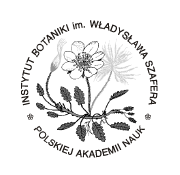 INSTYTUT CHEMII FIZYCZNEJ PAN
INSTYTUT CHEMII FIZYCZNEJ PAN
 INSTYTUT CHEMII ORGANICZNEJ PAN
INSTYTUT CHEMII ORGANICZNEJ PAN
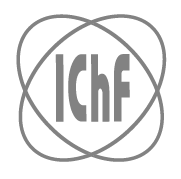 INSTYTUT FILOZOFII I SOCJOLOGII PAN
INSTYTUT FILOZOFII I SOCJOLOGII PAN
 INSTYTUT GEOGRAFII I PRZESTRZENNEGO ZAGOSPODAROWANIA PAN
INSTYTUT GEOGRAFII I PRZESTRZENNEGO ZAGOSPODAROWANIA PAN
 INSTYTUT HISTORII im. TADEUSZA MANTEUFFLA POLSKIEJ AKADEMII NAUK
INSTYTUT HISTORII im. TADEUSZA MANTEUFFLA POLSKIEJ AKADEMII NAUK
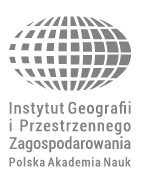 INSTYTUT JĘZYKA POLSKIEGO POLSKIEJ AKADEMII NAUK
INSTYTUT JĘZYKA POLSKIEGO POLSKIEJ AKADEMII NAUK
 INSTYTUT MATEMATYCZNY PAN
INSTYTUT MATEMATYCZNY PAN
 INSTYTUT MEDYCYNY DOŚWIADCZALNEJ I KLINICZNEJ IM.MIROSŁAWA MOSSAKOWSKIEGO POLSKIEJ AKADEMII NAUK
INSTYTUT MEDYCYNY DOŚWIADCZALNEJ I KLINICZNEJ IM.MIROSŁAWA MOSSAKOWSKIEGO POLSKIEJ AKADEMII NAUK
 INSTYTUT PODSTAWOWYCH PROBLEMÓW TECHNIKI PAN
INSTYTUT PODSTAWOWYCH PROBLEMÓW TECHNIKI PAN
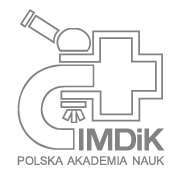 INSTYTUT SLAWISTYKI PAN
INSTYTUT SLAWISTYKI PAN
 SIEĆ BADAWCZA ŁUKASIEWICZ - INSTYTUT TECHNOLOGII MATERIAŁÓW ELEKTRONICZNYCH
SIEĆ BADAWCZA ŁUKASIEWICZ - INSTYTUT TECHNOLOGII MATERIAŁÓW ELEKTRONICZNYCH
 MUZEUM I INSTYTUT ZOOLOGII POLSKIEJ AKADEMII NAUK
MUZEUM I INSTYTUT ZOOLOGII POLSKIEJ AKADEMII NAUK
 INSTYTUT BADAŃ SYSTEMOWYCH PAN
INSTYTUT BADAŃ SYSTEMOWYCH PAN
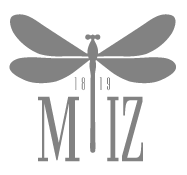 INSTYTUT BOTANIKI IM. WŁADYSŁAWA SZAFERA POLSKIEJ AKADEMII NAUK
INSTYTUT BOTANIKI IM. WŁADYSŁAWA SZAFERA POLSKIEJ AKADEMII NAUK







